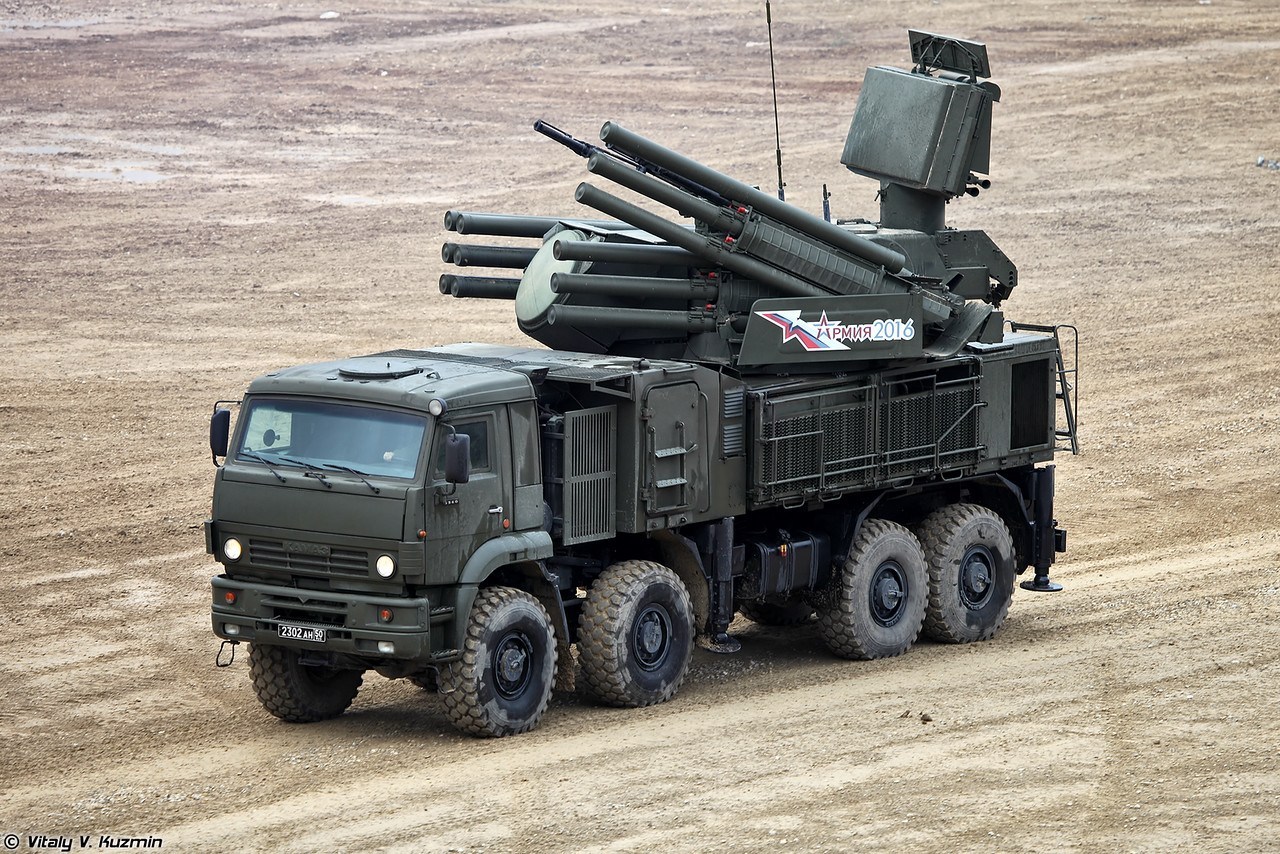
SOURCE: BulgarianMilitary.com
The Russians are conducting an intensive advertising campaign to encourage India to buy short-range “Pantsir-S1” anti-aircraft systems, learned BulgarianMilitary.com citing Defence24. For now, the Russians have to enjoy the 2018 contract when they managed to sell five S-400 “Triumph” anti-aircraft batteries to India for $ 5.43 billion.
Indians are not taking any serious actions yet, which would indicate their strong interest in subsequent “air-to-air” systems. That is why the Russians must take the initiative and try to emphasize everywhere how good and modern their anti-aircraft systems are. Particular emphasis is placed primarily on the advertising of self-propelled rocket artillery anti-aircraft “Pantsir-S1” sets.
Any occasion is used for this – including a visit to Moscow of the Indian delegation with Defense Minister Rajnath Singh at the end of June this year. During the negotiations, intensive negotiations were conducted on the supply of 33 MiG-29 and Su-30MKI fighters [the latter are manufactured under license at the HAL plant in India – editor’s note] to India [not concluded, however, with the conclusion of the contract].
But according to the Russians, the issue of signing the contract for the purchase of “Pantsir-S1” sets in their latest version was also to be discussed then. The incentives were primarily to be positive combat experiences that this system gained during operations in the Middle East.
Particularly useful for Indians is the ability to combat unmanned aerial vehicles and beyond the range of their weapons. The Russians believe that operations in Syria have confirmed the effectiveness of the Pantsir-S1 kits in this area, and the imperfections noted at that time will be removed in the version provided to India.
Indians were offered the latest version of the set with “full technical adaptation to Indian needs and creation of an effective service network”. This network would be connected to the global system of users of “Pantsir-S1”.An additional incentive for India is to be able to transfer technology by transferring the production of some system components. However, there is no talk of transferring the ability to design and manufacture anti-aircraft missiles.
The matter was given high publicity, and it was ensured that information on this subject also appeared in the Indian media. These publications were then cited in Russia, but only in the case of positive opinions.
A statement by one of the representatives of the Indian Ministry of Defense was also reprinted, which was supposed to assess that: “Russian Pantsir-S1 sets, due to their high mobility and versatility of use, are what India needs to strengthen the potential of its anti-aircraft defense, and which can be highly effective oppose the dangers of using unmanned aerial vehicles. In addition, Pantsir-S1 can be easily integrated into a broader air defense network and can work together with S-400 batteries that the Indian side requested earlier.”
But the Russians are also taking advantage of the current situation in India. It is not without reason that, for example, “Pantsir-S1” would be useful in the Ladakh region, where territorial disputes have been going on between India and China for years, and where there has recently been a clash between Chinese and Indian soldiers.
Pantsir-S1 missile systems are useless against Turkish drones
BulgarianMilitary.com recalls that on June 20 Russian experts said that Russian-made Pantsir-S1 anti-aircraft missile-cannon systems [ZRPKs], which are used in Libya, are useless against Turkish operational-tactical multi-purpose unmanned aerial systems Bayraktar TB2.
In May, BulgarianMilitary.com called the successful Bayraktar TB2 attack on Carapace “real genocide.”
According to them [sources – ed.] the modification of this ZRPK and its export version used by the Armed forces of Russia are different. In particular, the second is equipped only with an optical control system, while the first has a three-coordinate target detection station with a semi-active phased array antenna and a dual-band centimeter-millimeter radar tracking system for targets and missiles.
“Infrared channels in various ranges are used to track targets and missiles. Radar and optoelectronic devices make up a single system and can operate in different wavelengths,” the newspaper writes, recognizing that Russian-made air defense missile systems “are only poorly adapted to combat targets such as Turkish Bayraktar TV2”
The weekly notes that the Turkish drone strikes with precision weapons from four or more kilometers and is able to barrage for a long time at high altitude, which “significantly complicates its detection by the optical-electronic station ZRPK.”
They [sources – ed.] said that the Pantsir-S1 operators in Libya do not have access to highly mobile radar stations that could carry out external target designation for air defense missile systems.
Pantsir-S1 – Russian land and sea-based self-propelled anti-aircraft missile and cannon system (ZRPK).
The complex was developed by a number of structures of the military-industrial complex of the USSR and Russia, headed by the Instrument Design Bureau. Designed for close cover of civilian and military installations [including long-range air defense systems] from all modern and promising air attack weapons. It can also protect the defended object from ground and surface threats.
Work on the creation of the complex was completed in 1994, it was first demonstrated at MAKS-1995. Since that time, the complex has been significantly modernized, the last known modification was demonstrated at MAKS-2007.
On November 16, 2012, by order of the Chairman of the Government of the Russian Federation, D. A. Medvedev, the Pantsir-S1 ZRPK was adopted by the Russian Armed Forces. In 2015, the new “Pantsir-S2” complex with improved characteristics was adopted. In 2016, the development of the modification of the Pantsir-SM complex was completed, in which, due to the use of the newly developed multifunctional aiming station, the target range was increased to 40 km.
https://defencenewsofindia.com/india-could-buy-pantsir-s1-air-defense-missile-system-according-to-russian-sources/






